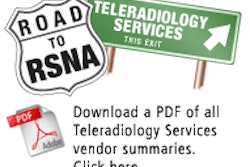Dear PACS Insider,
Every day clinicians make critical treatment decisions based on changes in lesion size shown on cross-sectional imaging. Radiologists, however, often rely on their impressions of change rather than actual measurements to determine whether the lesion has grown or decreased, according to Dr. Franklin Tessler and colleagues from the University of Alabama at Birmingham (UAB).
UAB researchers in a recent study found that while radiologists do well at discriminating lesion differences when the magnitude of difference is large or if there is no difference, performance is affected in the middle range of size differences. They also found that the magnification of one image relative to another can affect the ability of radiologists to perceive lesion growth.
Our coverage of Tessler's talk is the subject of this month's Insider Exclusive article. As a PACS Insider, you have access to the story before it is published for the rest of our AuntMinnie.com members. To learn more about the display magnification effect, click here.
In another story featured this month in the PACS Digital Community, we take a look at a pair of presentations on lossy JPEG 2000 compression in abdominal CT studies. In one paper, Austrian researchers judged 3D JPEG 2000 to be suitable at ratios up to 15:1, while in another study, a South Korean team found 5:1 JPEG 2000 to be visually lossless. For that article, click here.
Do you have a topic you'd like to see covered, or are you interested in submitting an article to AuntMinnie.com? Please feel free to drop me a line.




















